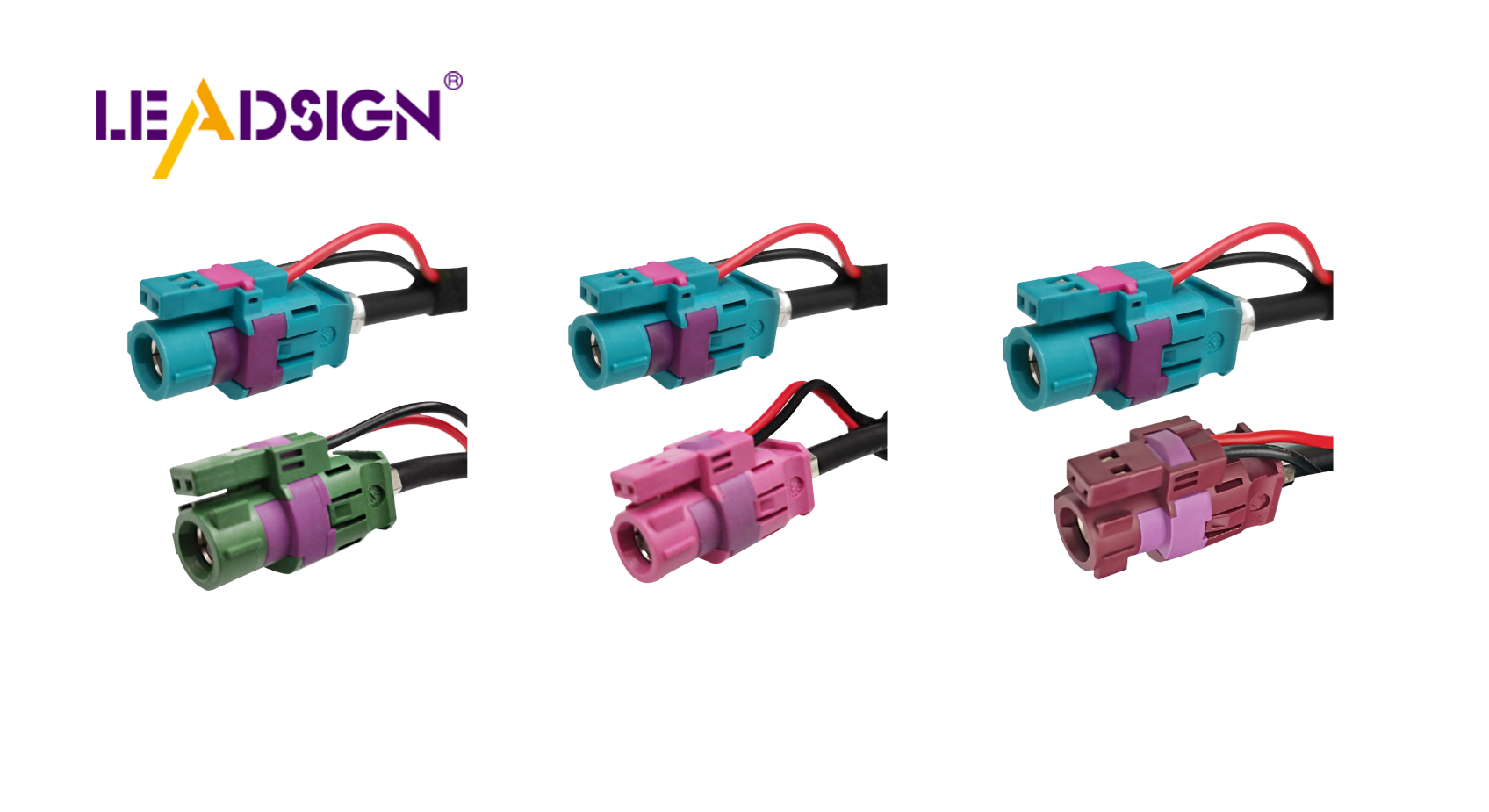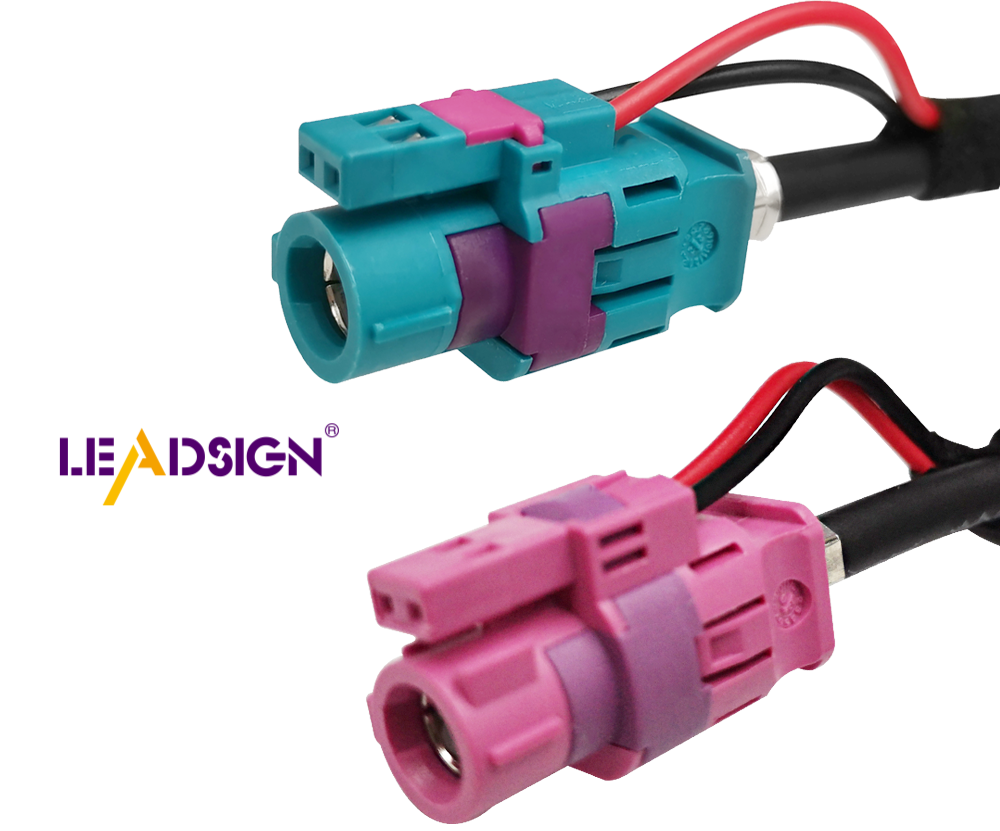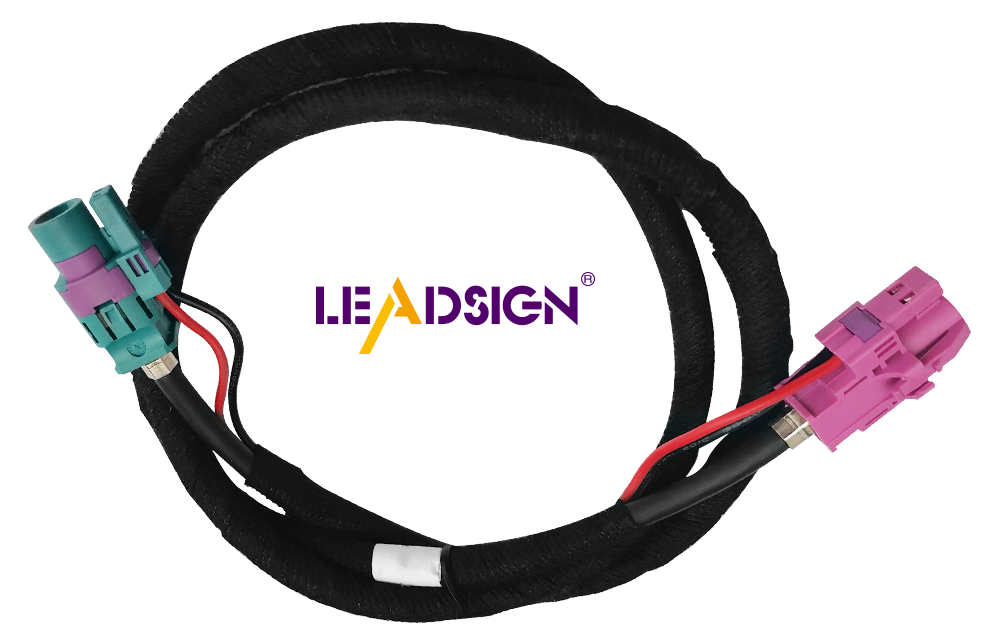Best Pigtail Connectors for Custom Wire and Cable Solutions

A pigtail connector creates a strong and safe connection in car wiring. It helps prevent problems like short circuits and electrical fires. This small tool also improves fuel use and car performance. It keeps the electrical system working well. Whether fixing or upgrading, the right pigtail makes wiring last longer and work better.
Key Takeaways
Pigtail connectors ensure secure and reliable connections in automotive wiring, preventing issues like short circuits and electrical fires.
Using pigtail connectors simplifies repairs and upgrades, allowing for quick installations and replacements without the need to redo entire wiring systems.
Different types of pigtail connectors, such as weatherproof and high-temperature connectors, are designed for specific environments, enhancing durability and performance.
Choosing the right pigtail connector based on its intended use, material, and compatibility with your vehicle is crucial for optimal performance.
Investing in quality connectors from trusted brands like Deutsch and Molex can save money in the long run by reducing the need for repairs and replacements.
Proper installation of pigtail connectors, including using the right tools and techniques, ensures strong connections that enhance the overall efficiency of your car's electrical system.
Regularly checking pigtail connectors for wear and tear can help maintain your vehicle's wiring system and prevent future electrical issues.
What Are Pigtail Connectors and Their Role in Automotive Wiring?

Definition of Pigtail Connectors
A pigtail connector is a small but important part of electrical systems. It has a short wire attached to a connector, linking it to other wires or parts. In cars, pigtails connect the electrical system to things like sensors, lights, and controls. This setup keeps connections steady and working well, even in tough conditions.
Over time, pigtail connectors have improved a lot. They now handle complex systems with better strength and efficiency. Whether fixing something simple or upgrading, these connectors help keep your car's wiring in good shape.
Key Benefits of Using Pigtail Connectors in Automotive Applications
Ensuring Secure and Reliable Connections
Pigtail connectors help make strong and safe connections in car wiring. They stop wires from coming loose, which can cause problems like fires. Using them ensures power and signals move smoothly between parts. This makes your car's electrical system work better overall.
Simplifying Repairs and Upgrades
Fixing or upgrading car wiring is easier with pigtail connectors. They are quick to install and remove, saving time and effort. For example, if a headlight breaks, you can replace it without redoing all the wiring. This makes them great for both mechanics and people fixing cars at home.
Enhancing Durability in Harsh Automotive Environments
Car wiring often faces tough conditions like heat, water, and shaking. Pigtail connectors are made to handle these challenges. Some are waterproof, while others resist high heat near engines. These features keep your car's wiring strong and reliable, even in rough situations.
Types of Pigtail Connectors and Their Uses
Picking the right pigtail connector helps your car work better. Each type has a special job to keep wiring strong. Below are common types of connectors and where they are used.
Weatherproof Pigtail Connectors
Best for outdoor lights and off-road vehicles
Weatherproof connectors handle tough outdoor conditions like rain and dirt. They have seals to block water, mud, and dust. Use them for outdoor lights or off-road vehicle wiring to keep things working well.
For example, these connectors are used in tail lights, fog lights, and extra lights. Their strong design stops water damage, making them great for outdoor car wiring.
High-Temperature Pigtail Connectors
Perfect for engines and hot areas
High-temperature connectors can handle very hot places. They are made from materials that won’t melt or break in heat. Use them for wiring near engines or exhausts for safe, lasting connections.
These connectors are often used for sensors, ignition systems, and other hot-zone parts. Their heat-proof design keeps connections steady, even in extreme heat.
Multi-Wire Pigtail Connectors
Useful for audio systems and tricky wiring setups
Multi-wire connectors make it easy to connect many wires to one part. They are great for complex setups like car audio systems. They keep wires neat and prevent mix-ups.
For instance, these connectors are used in car stereos to link speakers, amplifiers, and head units. They save time and ensure signals move smoothly.
Universal Pigtail Connectors
Universal pigtail connectors are great for fixing car wiring. They work with many systems, making them a handy choice. You can use them for quick and easy repairs.
These connectors help fix broken wires or replace damaged parts. They are simple to use and fit most car systems. Whether fixing lights or sensors, they make repairs easier.
For example, you can use them to fix tail lights. They are also useful for replacing old connectors in older cars. Their flexibility makes them a must-have tool.
Specialized Pigtail Connectors
HSD Connectors for Fast Data in Car Electronics
HSD connectors are made for fast data in modern cars. They help parts like cameras and USB ports work smoothly. These connectors keep data moving without problems.
They have strong locks and hold cables tightly. This keeps connections steady, even in tough conditions. They also prevent mix-ups, making them very reliable.
For example, they are used in car screens, Ethernet, and LVDS systems. These connectors keep your car's electronics running well.
Deutsch Connectors for Tough Jobs
Deutsch connectors are strong and made for heavy-duty tasks. They handle heat, shaking, and water without breaking. These connectors are perfect for hard jobs.
You’ll see them in trucks and construction vehicles. They work well in tough spots like engine areas. They keep wiring safe and reliable in harsh conditions.
For instance, they are used in engines and big machines. Their strength makes them great for demanding work.
Molex Connectors for Flexible Wiring
Molex connectors are good for many wiring setups. They are easy to use and connect wires securely. Their design helps avoid mistakes during installation.
You’ll find them in car audio, lights, and controls. They work well for both simple and tricky wiring jobs. These connectors are trusted for their reliable performance.
For example, they are used in car stereos and dashboards. Their precise connections make them a popular choice.
How to Pick the Best Pigtail Connector for Your Car
Choosing the right pigtail connector helps your car work well. Think about where it will be used, its material, and if it fits.
Think About Where It’s Used
First, know where and how you’ll use the connector. Different places need different types for the best results.
Inside or Outside Use
For inside use, pick connectors for safe, indoor conditions. They don’t need to block water but must stay secure. For outside, choose weatherproof connectors. These block water, dirt, and heat, making them great for outdoor lights.
For example, weatherproof connectors work well for tail or fog lights. They stop water from causing problems.
Specific Car Systems (Lights, Music, Engine)
Each car system needs a special connector. Lights need ones that handle power and resist rust. Music systems need multi-wire connectors for easy setups. Engines need heat-proof connectors to handle heat and shaking.
Using the right connector keeps things running smoothly and avoids problems.
Check Material and Strength
The material of a connector affects how well it works. Strong materials help it last in tough conditions.
Handles Heat
For hot areas like engines, pick heat-proof connectors. These stay strong in high heat and keep connections safe.
Heat-proof connectors are often used for engine sensors and ignition systems.
Blocks Water and Rust
For outdoor areas, use connectors with seals to block water and rust. This keeps them working in bad weather.
Weatherproof connectors are great for outdoor lights and muddy areas.
Make Sure It Fits and Is Easy to Use
A good connector should fit your wires and be simple to install. This saves time and avoids mistakes.
Matches Wire Size and Type
Make sure the connector fits your wire size. The wrong size can cause loose connections. Also, pick the right type, like single-wire or multi-wire.
For example, multi-wire connectors are great for music systems. Single-wire ones are good for small fixes.
Easy to Install or Custom Fit
Plug-and-play connectors are easy for quick fixes. Custom ones are better for tricky setups. Choose based on your skills and project needs.
Plug-and-play connectors are great for beginners. Custom ones are for experts working on complex systems.
By thinking about these things, you can pick the best pigtail connector. The right choice makes installation easy and keeps your car running well for a long time.
Think About Cost and Trusted Brands
Finding the Right Balance Between Price and Quality
Picking a pigtail connector needs a balance of cost and quality. Good connectors might cost more, but they last longer. They save money by needing fewer repairs or replacements. Cheaper ones may break easily and cause problems. Spending more on a strong connector avoids future issues.
Choose a connector based on where it will be used. For important parts like engines or outdoor lights, pick durable ones. These often resist heat or water, making them worth the price. For simpler jobs, universal connectors work well and cost less.
For example, a weatherproof connector stops water damage in outdoor lights. Paying more now can save repair costs later.
Best Brands for Dependable Performance
Using a trusted brand ensures your pigtail connector works well. Brands like Deutsch, Molex, and LEADSIGN are known for quality. Their connectors are made to last and fit perfectly.
Deutsch Connectors: Great for tough jobs, they handle heat and shaking. They are used in trucks and heavy machines.
Molex Connectors: These are flexible and work in audio systems and dashboards.
LEADSIGN HSD Connectors: These are perfect for fast data in modern cars. They work with cameras and screens.
Trusted brands test their products to meet high standards. This lowers the chance of problems and keeps your car’s wiring safe.
For example, OEM connectors from top brands fit your car perfectly. They often come with warranties, making them a smart choice.
By choosing quality and reliable brands, your pigtail connectors will work better. This improves your car’s performance and reduces electrical problems.
Step-by-Step Guide to Installing Pigtail Connectors Safely

Installing a pigtail connector the right way makes connections secure. It also improves how well your car's electrical system works. Follow these steps to do it safely and easily.
Tools and Materials Needed
Get all the tools and materials before starting. Being prepared saves time and makes the job easier. Here’s what you’ll need:
Wire strippers: To take off the wire covering.
Crimping tools: To attach the connector tightly.
Heat shrink tubing: To cover and protect the connection.
Soldering iron (optional): For stronger bonds if soldering is needed.
Electrical tape: To wrap and secure wires.
Multimeter: To check if the connection works.
Tip: Good tools help avoid mistakes and protect wires or connectors.
Preparing the Wires
Getting the wires ready is very important. Follow these steps to prepare them properly:
Stripping and Cleaning the Wires
Use wire strippers to remove about ½ inch of covering from the wire ends. Be careful not to cut the wire strands.
Check the exposed wire for damage or rust. If it’s damaged, cut and strip it again.
Wipe the wire with a dry cloth to clean off dirt or grease. This helps make a better connection.
Why it matters: Clean wires carry electricity better and last longer.
Ensuring Proper Wire Length
Make sure the wires are long enough to reach the connector without pulling.
Cut off extra wire to keep things neat and tidy. This helps avoid tangles and makes repairs easier later.
Pro Tip: Leave a little extra wire if it connects to moving parts like engines. This gives it room to move.
Connecting the Pigtail Connector
Now it’s time to attach the pigtail connector. Be precise to make a strong connection.
Crimping or Soldering the Wires
Put the stripped wire into the metal part of the connector.
Use a crimping tool to press the metal tightly around the wire. Make sure it’s secure and doesn’t come loose.
For extra strength, you can solder the wire. Heat the soldering iron, add a little solder, and let it cool.
Note: Crimping is quicker, but soldering makes the connection stronger. Pick what works best for you.
Using Heat Shrink Tubing for Insulation
Slide heat shrink tubing over the wire before attaching it.
After crimping or soldering, move the tubing over the joint.
Use a heat gun to shrink the tubing until it fits tightly. This seals and protects the connection.
Why it’s important: Heat shrink tubing keeps out water, dirt, and vibrations. This makes the connection last longer.
By following these steps, you can install a pigtail connector safely. Doing it right makes your car’s electrical system work better and helps the connectors last longer.
Testing and Finishing the Connection
After adding the pigtail, you need to test it. This step makes sure your wiring works well and avoids future problems.
Checking for Strong Connections
First, check the connection closely. Make sure the wires are tightly attached to the pigtail. Gently pull each wire to see if it stays in place. A strong connection keeps power and signals flowing without issues.
Next, look at the insulation. Ensure heat shrink tubing or tape fully covers the wires. This keeps out water, dirt, and shaking. If you see gaps or loose covers, fix them right away to stop damage later.
Tip: A strong connection helps your pigtail last longer and work better.
Testing the System to Ensure It Works
After checking the connection, test the system to see if it works. Follow these steps:
Turn on Power: Start the car or turn on the power to activate the system.
Test the Part: Check the part connected to the pigtail. For example, see if a light turns on or if an engine part works properly.
Use a Multimeter: Check the voltage or flow of electricity with a multimeter. This tool finds hidden wiring problems.
Look for Errors: Watch for warning lights or error messages on the dashboard. These may show a problem with the connection.
If something doesn’t work, check the setup again. Make sure the wires match and the pigtail fits the part. Fixing problems early saves time and money later.
Why it’s important: Testing ensures the pigtail works well in real-life use and avoids failures.
By testing and checking carefully, you can trust your pigtail to work perfectly. This step keeps your car’s electrical system safe and efficient.
Picking the right pigtail keeps your car's wiring reliable. Think about where it will be used, the material, and trusted brands. Good connectors like HSD, Deutsch, and Molex work well in cars. For outdoor lights, use weatherproof connectors. For engine areas, pick heat-resistant pigtails. Choosing the right type makes your car last longer and work better. Strong connectors also lower the chance of wiring problems later.
What are pigtail connectors used for in vehicles?
Pigtail connectors help make strong and lasting wire connections. They link parts like lights, sensors, and controls to the car's wiring. These connectors keep power and signals steady, even in tough conditions.
Pigtail connectors have been important in cars for a long time. Newer designs are stronger and work better with modern systems.
Are pigtail connectors suitable for all types of vehicles?
Yes, pigtail connectors can be used in cars, trucks, bikes, and big machines. They are useful for many jobs, like connecting headlights or sound systems. Picking the right one makes sure it fits your vehicle's needs.
What is the difference between OEM and aftermarket pigtail connectors?
OEM connectors are made for specific car models. They fit well, last longer, and often come with a warranty. Aftermarket connectors are cheaper but might not fit as perfectly or work as well.
Using OEM connectors helps your car's wiring work properly and avoids problems.
How do I know which pigtail connector to choose?
Think about where and how you’ll use the connector. Weatherproof ones are good for outdoor use. Heat-proof ones are best for engines. Multi-wire connectors are great for sound systems. Always match the connector to your car's wiring needs.
Can pigtail connectors improve vehicle performance?
Yes, they can. They make sure wires stay connected and work well. This lowers the chance of power problems and helps your car run better and safer.
Are pigtail connectors easy to install?
Most pigtail connectors are simple to set up. Some are plug-and-play, making repairs quick. Custom ones may need more skill. With the right tools, you can install them easily.
Do pigtail connectors require maintenance?
Pigtail connectors don’t need much care but should be checked sometimes. Look for rust, wear, or loose wires. Replace damaged ones quickly to keep your car's wiring safe.
Can I use pigtail connectors for non-automotive applications?
Yes, you can use them in other areas like phones or home gadgets. Just make sure the connector fits the system's needs, like voltage and environment.
Why are weatherproof pigtail connectors important?
Weatherproof connectors stop water, dirt, and dust from ruining wires. They are great for outdoor uses like headlights or off-road vehicles. Their sealed design keeps them working in bad weather.
Are there specific brands known for reliable pigtail connectors?
Yes, brands like Deutsch, Molex, and LEADSIGN are trusted. Deutsch connectors are strong for heavy work, Molex ones are flexible for many setups, and LEADSIGN connectors are great for fast data in modern cars.
See Also
Exploring FAKRA Coaxial Cable Connectors' Versatility and Advantages
Discovering the Advantages of FAKRA Cable Connectors
Harnessing the Strength of FAKRA Coaxial Connectors

